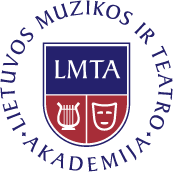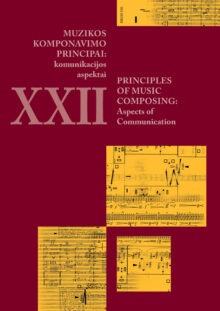This collection of scholarly papers is a periodical aimed at raising, researching and comprehending fundamental questions in the field of music composition. The theme underlying Volume 22 of Principles of Music Composing deals with aspects related to communication. Individualization of compositional principles
and the emergence of pluralistic conceptual ecologies in the global stage of contemporary music inevitably leads to communicative challenges. It seems that today, more than ever, the musical discourse is segregated into many different communicative spaces—sociocultural “bubbles” in which internalized intellectual tools determine a particular collective understanding. Different communicative intentions have steered the variety of technical means of expression we have at our disposal, and conversely—this miscellany of technical means and mediums of expression has inspired different things and ways for composers to communicate. The inherently multifaceted nature of the subject requires us to approach it from carefully selected angles, which include, but are not limited to: the sociocultural context of the composer and/or composition; the conceptual idea and/or purpose of the composition; the intended venue; implementation of technology; interpretation by the performer; reception by the audience; etc. These and other aspects are explored by musicologists and
composers from different sociocultural backgrounds and countries (Lithuania, Poland, Sakartvelo, Serbia, Greece, Germany, Austria, Ghana, and the United States).
Articles
- Pratarmė / Foreword
- 1 Komunikacija kaip neatsiejama muzikos dedamoji: teoriniai, istoriniai ir tarpdisciplininiai požiūriai / Communication as an Inherent Constituent of Music: Theoretical, Historical, and Interdisciplinary Approaches
-
Miloš Zatkalik.
Musical Communication between Niklas Luhmann and Gilles Deleuze, or How Djuro Zivkovic Melts the Walls -
Sigitas Mickis.
Intoning Compositional Elements of Music (Part 2) -
Manuel Domínguez Salas.
Graphicacy: Imagining, Creating, and Interpreting a Musical Work through Images - 2 Santykis tarp kūrybinio proceso ir komunikacinių erdvių / The Relationship between the Creative Process and Communicative Spaces
-
Alastair White.
“Speaker For The Dead”: Composition As Speculative Archaeoacoustics -
Stephan Lewandowski.
Communication between the Present and the Past. Multi-Referentiality in György Kurtág’s HOMMAGE à R. Sch., Op. 15d -
Radoš Mitrović.
“Listening is a Performative Act”—Case Study of David Helbich -
Gvantsa Ghvinjilia.
Eka Chabashvili’s Symphony-exhibition Khma—the New Compositional Paradigm - 3 Šiuolaikiniai komunikaciniai stimulai nacionalinės muzikos raiškai / Contemporary Communicative Stimuli for the Emergence of National Music
-
Dina Lentsner.
Ēriks Ešenvalds as a (Post)Feminist? Communicating Body in Legend of the Walled-In Woman -
Nana Amowee Dawson.
Kwadehyewa: Inviting Cross-cultural Dialogue -
Kalliopi Stigka.
The “Mikis Theodorakis Phenomenon.” From the Music Score to the After-Concert: A Unique “Channel of Communication” - Apie autorius / About the authors

